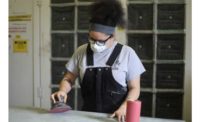The skilled trades lack qualified talent. While certainly not a new problem, this issue is glaringly lacking a clear-cut solution.
Baby boomers — now in or approaching their 70s — are aging out of the workforce and retiring in droves. This reality, grouped with the societal pressure on younger generations to pursue four-year college degrees in lieu of blue collar careers along with the growth of the economy and trade industries, has created this perfect storm.
The workforce shortage impacts every level of the trade industries from manufacturers to distributors to contractors and, yes, even end users who feel the brunt of the impact deep within their pockets.
Elected officials are aware of this issue and are making attempts at alleviating this economic predicament by introducing legislation. President Donald Trump recently issued an executive order aimed at promoting technical and vocational education as well as apprenticeship programs. It will take some time to see the extent of the impact of these measures, and while they’ll help, those in the trades shouldn’t rely on them alone to solve the problem.
The Southwire Solution
Southwire, an Atlanta-based global wire and cable manufacturer, has stepped up its recruitment of young, talented people through its support of the 12 for Life program.
12 for Life is a cooperative education program designed to help students gain extra motivation to finish 12 years of school. By providing students with classroom instruction, on-the-job training, key work/life skills, mentoring, and employment opportunities, the program aims to help students stay in school, graduate, and not only go on to become successful, productive members of the workforce but to ensure those real-world skills translate into real-life success.
Participating students attend school for a portion of the day and then spend the remainder of their time at the Southwire facility, which is operated and maintained by high school students with minimal adult supervision.
“It’s not a charity,” said Blair Parker, manager, 12 for Life. “It’s not an entitlement program. We believe in sustainability from a company standpoint, and we believe that no matter how noble an idea somebody has, it’s got to stand on its own two feet. We run the program based on the needs of our customers.”
With three four-hour shifts throughout the day, not only can students work according to their class schedules, but they can also take classes in classrooms built into the facility that overlook the plant floor.
“The kids take what we call a life skills class, which is actually four different classes throughout the week,” said Kelley Bennett, academic counselor, 12 for Life. “So, they gain financial literacy and budgeting skills, where they talk about mortgages and can see beyond having $1,000; science and manufacturing, where they learn more about the equipment they use out on the floor; soft skills, such as integrity, punctuality, and a positive attitude, which all employers are looking for; and at the end of the week, we bring in a guest motivational speaker.”
12 for Life takes the focus on independence and responsibility by pushing students to lead by example. In fact, upperclassmen typically occupy supervisory roles on the floor.
“Those who take advantage of this program find it a great place with a lot of opportunities,” Bennett said.
“We started small with 69 students,” said Parker. “Today, we have 242 students, and we’ve had as many as 341 at one time. There’s 117 workstations, and back then [in 2007], we only produced two products. Today, we run up to 400 products.”
While those in the trades continue to struggle to locate qualified workers, perhaps more companies should consider adopting a model similar to Southwire’s 12 for Life. Introducing high school students to trades careers and investing in their futures is a sure-fire way to build the future of the HVACR industry.









